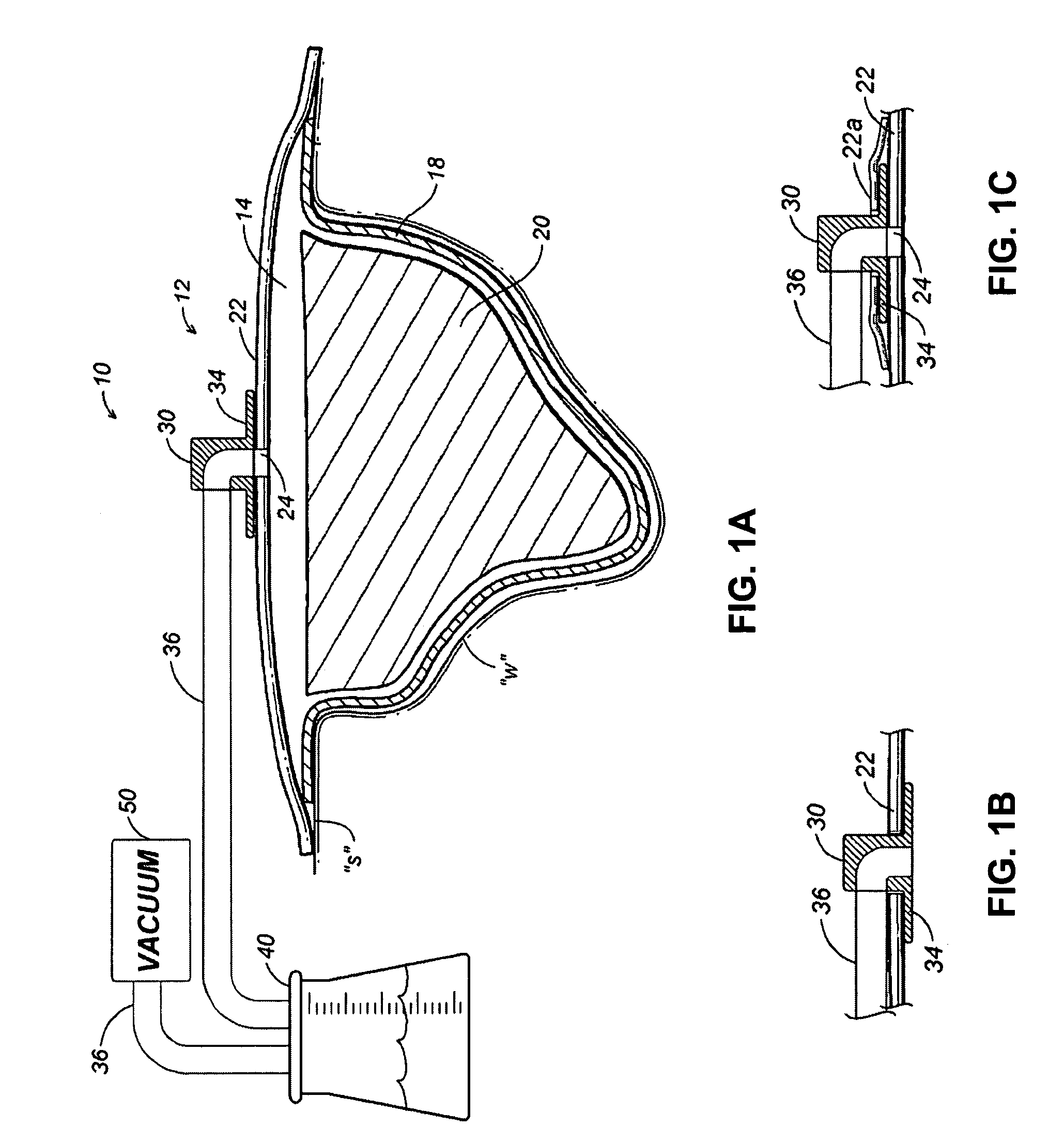Method and apparatus for bridging from a dressing in negative pressure wound therapy
a technology of negative pressure and wound therapy, applied in the field of negative pressure wound therapy, can solve problems such as patients' discomfort, and achieve the effect of reducing fluid conta
- Summary
- Abstract
- Description
- Claims
- Application Information
AI Technical Summary
Benefits of technology
Problems solved by technology
Method used
Image
Examples
Embodiment Construction
[0023]Referring initially to FIG. 1, an NPWT apparatus is depicted generally as 10 for use on a wound “w” surrounded by healthy skin “s.” The NPWT apparatus 10 includes a wound dressing 12 positioned relative to the wound “w” to define a reservoir 14 in which a negative pressure appropriate to stimulate healing may be maintained.
[0024]Wound dressing 12 includes a contact layer 18 positioned in direct contact with the bed of wound “w” and may be formed from perforated film material. An appropriate perforated material permits the negative pressure applied to the reservoir to penetrate into the wound “w,” and also permits exudates to be drawn through the contact layer 18. Passage of wound fluid through the contact layer 18 is preferably unidirectional such that exudates do not flow back into the wound bed. Unidirectional flow may be encouraged by conical or directional apertures formed in the contact layer 18, or a lamination of materials having absorption properties differing from tho...
PUM
 Login to View More
Login to View More Abstract
Description
Claims
Application Information
 Login to View More
Login to View More - R&D
- Intellectual Property
- Life Sciences
- Materials
- Tech Scout
- Unparalleled Data Quality
- Higher Quality Content
- 60% Fewer Hallucinations
Browse by: Latest US Patents, China's latest patents, Technical Efficacy Thesaurus, Application Domain, Technology Topic, Popular Technical Reports.
© 2025 PatSnap. All rights reserved.Legal|Privacy policy|Modern Slavery Act Transparency Statement|Sitemap|About US| Contact US: help@patsnap.com



